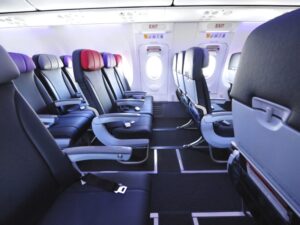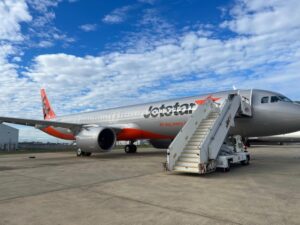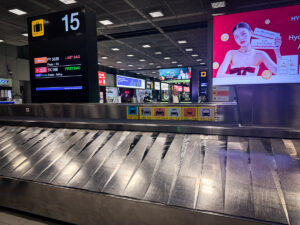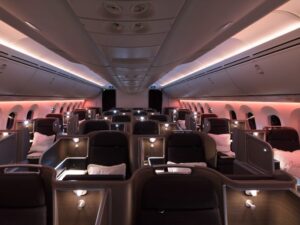One of the features in the battle between Qantas and Virgin of recent years has been the increase in capacity both airlines have made in a bid to make money. Not long ago, trans- continental traffic was mostly single aisle jets. With Virgin upping the ante to wide-bodies with lie flat beds in business, Qantas had to follow. A similar story could be seen even on the east coast, with more frequent flights. Some country routes even got to seeing competition for the first time, with not just one or two new competitors flights, but multiple flights a day. With a truce now called in the expansion by both parties, what’s going to happen to all the existing aircraft?
The QF and to a lesser extent the VA loss made headlines. Beyond those already flagged, is there any chance of either airline making cuts to the number of aircraft operating flights (obviously with VA I’m thinking domestically, since internationally there’s little to cut) or would this be viewed by JB or AJ as being a ‘gift’ to the competitor? Restricting supply…Economics 101. Surely the boards of both airlines must be under pressure to save even more money – fast.
Both airlines certainly made a point of their plans in this respect when they announced their results. Qantas are accelerating the retirement yet again of their older aircraft, and even starting to sell some of the relatively young 737 fleet. Virgin for their part are saying goodbye to their two initial A330 aircraft leased just a few years ago, and have put a halt to any further turboprop deliveries for their regional operations.
Further retirements or returns are unlikely to happen however. Unlike cars, aircraft are not easily bought or sold, and contracts often include penalties for early lease terminations. Aircraft sent to storage in the desert can remain there for years before a buyer is found, their resale value deteriorating by the day. Some of our members feel the cuts have gone deep enough.
Again, restricting supply is what they are already doing as well, domestically at least. Qantas has announced no new capacity and various reductions in flights recently, although for several years they were adding more capacity than was met by demand, and as you suggest this did lead to lower profits. But this is changing now.
Perhaps the answer is to change the capacity to routes where it can be used. Recently Qantas themselves expressed surprise at the success of the seasonal Perth-Auckland route, extending its operation for another year. They also reduced capacity to Asia through downsizing aircraft, giving them the flexibility to add additional seats at peak times to cater for demand on flights to America and elsewhere.
While airfares are clearly going to rise, as there will be fewer seats on offer for most routes, what further cuts do you think might be possible? If you were airline CEO for a day, what would you do? Have your say HERE.





































































